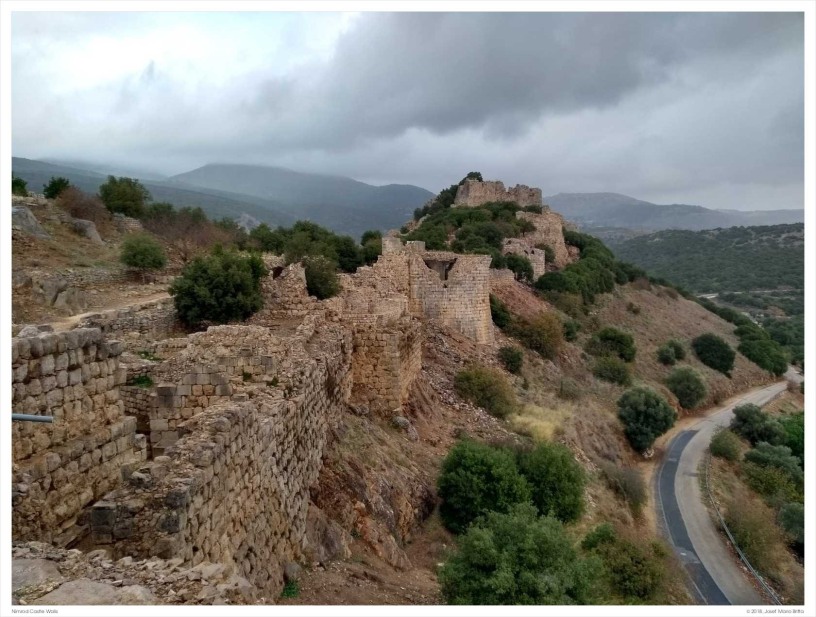Teaching archaeology and geography of the Holy Land means that I do plenty of visits to archaeological sites: not only can, but actually have to. It also means, however, that often it’s the same key sites over and over and over again. So a visit to Jerusalem from a good friend of mine provided a great excuse to travel to the Galilee for a couple of days with a different agenda.
Heading to the far north of the Galilee, we couldn’t leave out Tel Dan and Banias (Caesarea Philippi). But we first ventured further on to Nimrod Castle, only some ten minutes by car from Banias, in the Golan Heights. Well worth the ride: the castle and the views are magnificent. The weather was ominous, and we got soaked during the visit – but hey, both of us are used to British weather, so getting soaked on a day out comes with the package.
Nimrod Castle, or Qalaat Subeiba, commands the ancient route to Damascus, and was first built in 1228-30 by al-Aziz Uthman, nephew of Saladin, to block a potential attack by the Crusaders. In its short life, it was captured by the Mongols and rebuilt by the Mamluks, but by 1291, when the Crusaders lost Akko, it had lost its strategic value. Later Arab legends associated the castle with Nimrod, mighty hunter, mentioned only fleetingly in Genesis (10,8-9), but the subject of a number of stories in Jewish and Muslim tradition, where he disputes with Abraham.




back in 1998 (that’s a LONG time ago) on my first visit to the Holy Land I was completely enchanted by this place…. I even imagined writing a story happening there Some time-travel thingy. Such a pity it was not on the program last year